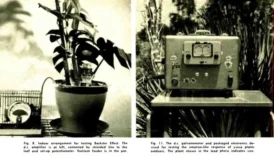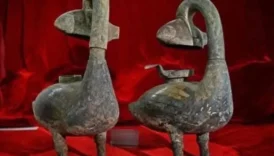The Talking Gorilla Said Something Shocking About Humans
Can gorillas learn a language? Throughout history, researchers have studied the ability of animals to communicate with humans, but a gorilla named Koko changed everything we thought we knew. Koko understood over 1,000 words and could express herself using sign language. However, what truly caught the world’s attention was her final message to humanity: “Humans are destroying the world.”
- The Talking Gorilla Said Something Shocking About Humans
- The Astonishing Story of Koko
- A Gorilla That Thought Like a Human
- Koko’s Deep Emotional Bonds
- Celebrities and Koko’s Widespread Fame
- Death and Her Final Message
- Science and Koko
- Final Thoughts
- Video of Koko the Talking Gorilla
The Astonishing Story of Koko
Born on July 4, 1971, at the San Francisco Zoo, Koko’s full name was Hanabi-Ko, meaning Fireworks Child in Japanese. This name, however, barely captured her extraordinary intelligence and emotional depth. Separated from her mother at an early age due to illness, Koko was raised by Dr. Francine “Penny” Patterson from Stanford University. Penny’s goal was to teach a gorilla to communicate with humans.
At first, Koko struggled to learn sign language, but over time, she mastered basic words and gradually expanded her vocabulary to hundreds of words. She could express concepts such as “drink,” “hungry,” and “happy,” and even comment on objects and situations.
A Gorilla That Thought Like a Human
Koko’s learning abilities amazed scientists. She didn’t just mimic words—she combined them creatively. For example, she didn’t know the word for ring, so she called it a finger bracelet. When she saw an empty cup, she signed “no drink,” showing she understood the absence of something.
Koko also had a sense of humor. One day, she referred to herself as a good bird and claimed she could fly, only to sign “joke!” and laugh. This behavior led scientists to question the Theory of Mind—the ability to understand that others have their own thoughts and emotions. Previously, this was believed to be unique to humans.
Koko’s Deep Emotional Bonds
In 1984, Koko asked for a kitten as a birthday present. Caregivers brought her several kittens to choose from, and she picked a small, tailless gray kitten. She named it All Ball and treated it like her own baby. Tragically, a few months later, the kitten escaped and was hit by a car.
Koko’s reaction stunned scientists. Upon hearing the news, she sat silently for a while, then signed “sad,” “bad,” and “sleep.” She grieved for days, refusing to play and repeatedly signing “sad.” This reaction proved that Koko not only understood words but also experienced deep emotions such as loss and mourning.
Celebrities and Koko’s Widespread Fame
Koko became famous worldwide, and many people, including celebrities, wanted to meet her. One of her favorite visitors was comedian Robin Williams. In a heartwarming video, Koko can be seen taking off Williams’ glasses, hugging him, and laughing together.
However, when Robin Williams tragically passed away in 2014, Koko’s sadness was noticeable. After being informed of his death, she became unusually quiet and spent the day with a somber expression.
Death and Her Final Message
Koko had always expressed thought-provoking ideas about life. When asked about death, she once signed, “Dead go to a comfortable hole.” But her most haunting words came shortly before her own passing. Using sign language, she gave humanity a powerful warning:
“I am Gorilla. I am flowers, animals. I am nature. I love humans. I love Earth. But humans are stupid… Koko cry. Fix Earth! Help Earth! Nature is watching you and thanks you.”
Many interpreted this as a plea for environmental protection. It wasn’t just about Koko or gorillas—it was about all living beings and their connection to the planet.
Science and Koko
Koko’s abilities challenged conventional views on animal intelligence. She demonstrated that animals could think, express emotions, and even create new concepts. Today, her training methods continue to influence research on communication with great apes.
Koko passed away on June 19, 2018, at the age of 47. Yet, her legacy remains. She wasn’t just a gorilla—she was a being capable of love, humor, grief, and wisdom. Her words encouraged people to reconsider their relationship with nature.
Final Thoughts
Koko’s life proved that animals are far more intelligent, emotional, and profound than we once believed. She reminded us of the importance of coexisting with nature and treating the planet with care.
Her last message was simple yet powerful: Save the world. Nature is watching.
References
- Patterson, F. G., & Linden, E. (1981). The Education of Koko. Holt, Rinehart and Winston.
- Savage-Rumbaugh, S., & Lewin, R. (1994). Kanzi: The Ape at the Brink of the Human Mind. Wiley.
- Premack, D. (1986). Gavagai! Or the Future History of the Animal Language Controversy. MIT Press.
Video of Koko the Talking Gorilla






